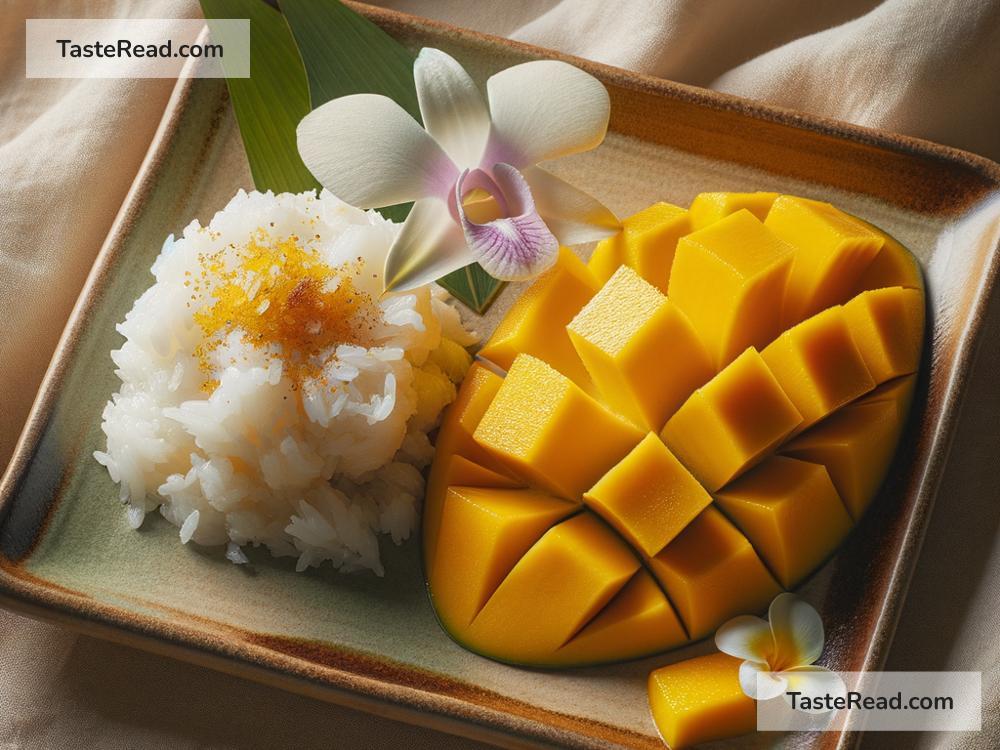Title: Unveiling the Magic of Thai Mango Sticky Rice
There’s a dish from Thailand that’s so simple yet unbelievably magical that it captures the hearts of everyone who tries it. This dish is none other than Mango Sticky Rice. It’s a classic Thai dessert known for its delightful combination of sweet, sticky rice, ripe, juicy mangoes, and creamy coconut sauce. It’s like a little piece of Thai culinary magic on your plate, bringing together flavors and textures in a way that’s hard to find anywhere else. Let’s dive into the world of Mango Sticky Rice and discover what makes it so special.
The Basics of Mango Sticky Rice
At its core, Mango Sticky Rice consists of just three main elements: sticky rice (also known as glutinous rice), coconut milk, and ripe mangoes. Each component plays a crucial role in making this dish a harmonious blend of flavors and textures. The sticky rice is steamed and then mixed with sweetened coconut milk, creating a soft, slightly sticky texture that melts in your mouth. Fresh, ripe mangoes are sliced and served alongside, their sweetness and tang perfectly balancing the richness of the coconut rice. Finally, a drizzle of thick coconut sauce and a sprinkle of crispy mung beans or sesame seeds on top add the finishing touches to this delightful dessert.
The Secret Behind Its Simplicity
What makes Mango Sticky Rice so incredible is the balance it achieves with such simple ingredients. The key to its perfection lies in the quality and ripeness of the mangoes. Thailand is blessed with some of the best mangoes in the world, such as the Nam Dok Mai variety, which are incredibly sweet and aromatic. When paired with the creamy, rich flavor of the coconut-infused sticky rice, the mangoes create a taste sensation that’s both refreshing and comforting.
Another secret to its magic is the contrast in textures: the soft, chewy rice against the smooth, velvety flesh of the mango. It’s a dance of sensations in your mouth that you won’t easily forget.
A Dish with a Heart
But Mango Sticky Rice is more than just a delicious dessert; it’s a dish with a heart. It’s often shared with friends and family, a symbol of love and togetherness. In Thailand, it’s commonly enjoyed during the summer months, especially during the mango season when mangoes are at their peak of sweetness. This timing has made it a seasonal treat that’s eagerly anticipated by locals and visitors alike.
Moreover, making Mango Sticky Rice is a labor of love. It involves careful preparation—from selecting the perfect mangoes to perfectly cooking the sticky rice and preparing the coconut milk mixture. Each step is done with attention and care, ensuring that the final dish is as delightful as possible.
Enjoying Mango Sticky Rice Yourself
You don’t have to travel to Thailand to enjoy this exquisite dish. Mango Sticky Rice is surprisingly easy to make at home, requiring only a few ingredients and some patience. The key is to start with the right kind of rice (glutinous or sticky rice) and to allow it to absorb the coconut milk fully. With ripe mangoes and a homemade coconut sauce, you can recreate this Thai classic in your own kitchen.
Or, if cooking isn’t your thing, you’ll be pleased to know that Mango Sticky Rice has transcended its Thai origins and can now be found in Thai restaurants around the globe. Its universal appeal has made it a favorite dessert for many, showcasing the power of simple, quality ingredients.
A Dessert That Captures Hearts
Mango Sticky Rice is a testament to the magic that can happen when simplicity meets quality. It’s a dish that’s deeply rooted in Thai culture yet has won the hearts of people from all walks of life. Its combination of flavors and textures is a celebration of culinary harmony, proving that sometimes the simplest dishes are the most memorable.
So next time you come across Mango Sticky Rice, take a moment to savor each bite, appreciating the love and tradition that goes into making this simple yet enchanting dish. It’s a delightful culinary journey to Thailand, no passport required.


